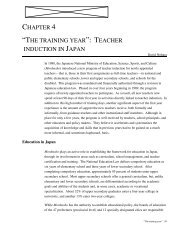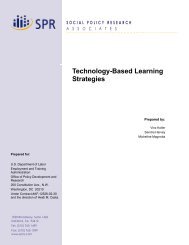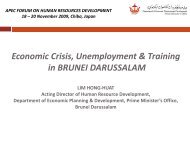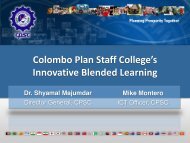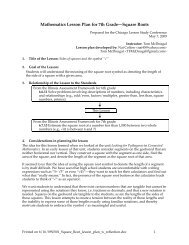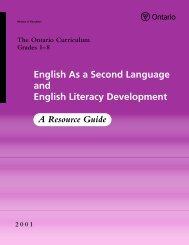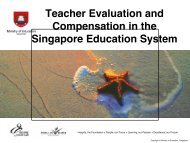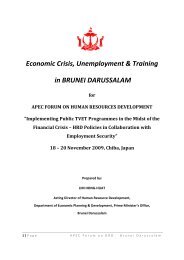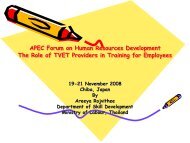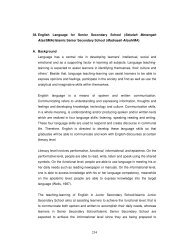Quality Assurance Systems in Asia-Pacific Economic Cooperation
Quality Assurance Systems in Asia-Pacific Economic Cooperation
Quality Assurance Systems in Asia-Pacific Economic Cooperation
You also want an ePaper? Increase the reach of your titles
YUMPU automatically turns print PDFs into web optimized ePapers that Google loves.
ENHANCEMENT OF QUALITY ASSURANCE SYSTEMS IN HIGHER EDUCATION IN APEC MEMBER ECONOMIES<br />
PAASCU's accreditation of medical schools has been recognised by the National Committee<br />
on Foreign Medical Education Accreditation under the US Department of Education. In the<br />
process of recognition, policies, standards and procedures of PAASCU have been scrut<strong>in</strong>ised<br />
to determ<strong>in</strong>e comparability with the medical education program be<strong>in</strong>g offered <strong>in</strong> the US. In<br />
2004, PAASCU was given a 5-year accreditation by the US Department of Education,<br />
Overall, there seems to be very little external formal benchmark<strong>in</strong>g done by the QA bodies.<br />
AUQA is currently benchmark<strong>in</strong>g with agencies from Germany and Ireland. This is an area<br />
that needs further attention.<br />
8.4 Review<br />
In general, QA systems constantly review their policies and standards and update their<br />
procedures and guidel<strong>in</strong>es. QA bodies of the APEC economies have these reviews as a part<br />
of their <strong>in</strong>ternal monitor<strong>in</strong>g mechanisms. Annual performance review, <strong>in</strong>put from stakeholders<br />
and suggestions from <strong>in</strong>ternational scholars feed <strong>in</strong>to the reviews. Some have added more<br />
structure to self-reviews, although this is an <strong>in</strong>ternal exercise. HKCAA did a self-review <strong>in</strong><br />
2003 which it states that helped to f<strong>in</strong>d its position.<br />
Some, such as CNAP, AUQA, and NZUAAU have taken up external reviews. The<br />
predecessors of MQA have undergone Internal <strong>Quality</strong> Audits and ISO 9002:2000 audit. ITP-<br />
Q is audited by the government body NZQA. NZQA <strong>in</strong> turn has undergone three reviews. The<br />
Board commissioned an <strong>in</strong>ternal review <strong>in</strong> 2005, conducted by a Committee of the Board with<br />
external advice provided. The major f<strong>in</strong>d<strong>in</strong>gs of this related to the governance of the<br />
organisation and a new committee structure was established as a result. The second one was<br />
by an external audit panel for the Approvals, Accreditation and Audit Group and ITP-Q which<br />
has delegated authority from NZQA. The major f<strong>in</strong>d<strong>in</strong>gs of this audit were about strengthen<strong>in</strong>g<br />
document and <strong>in</strong>formation management. An <strong>in</strong>ternal audit team is now monitor<strong>in</strong>g this. Also,<br />
the external audit identified some policy gap that was addressed by a major <strong>in</strong>-house project.<br />
Thirdly, NZQA also has an <strong>in</strong>ternal audit function. As noted earlier, NZUAAU has been<br />
reviewed <strong>in</strong> 1997 and 2001.<br />
PAASCU underwent an external review <strong>in</strong> 2006 that resulted <strong>in</strong> improvements on the review<br />
<strong>in</strong>strument, retra<strong>in</strong><strong>in</strong>g of accreditors and review of the accreditation manual. NAA underwent<br />
an external evaluation by a team of HEI representative, regional bodies and the heads of<br />
Federal Service of Supervision <strong>in</strong> Education and Science <strong>in</strong> 2004.<br />
8.5 Monitor<strong>in</strong>g efficiency and effectiveness<br />
The QA systems have a suite of measures to monitor their efficiency such as the follow<strong>in</strong>g:<br />
<br />
<br />
<br />
<br />
<br />
<br />
<br />
<br />
review<strong>in</strong>g the outcomes of operation aga<strong>in</strong>st the costs<br />
organis<strong>in</strong>g site visits <strong>in</strong> such a way that travel costs are m<strong>in</strong>imised<br />
sett<strong>in</strong>g target regard<strong>in</strong>g operat<strong>in</strong>g costs, and at the end of the fiscal year, review<strong>in</strong>g<br />
whether actual performance met the <strong>in</strong>itial target<br />
develop<strong>in</strong>g strategic plans and review<strong>in</strong>g aga<strong>in</strong>st them<br />
monitor<strong>in</strong>g aga<strong>in</strong>st key performance <strong>in</strong>dicators such as number of assessments handled<br />
per assessor and staff, process cycle time, budget allocation and utilisation rate<br />
monitor<strong>in</strong>g aga<strong>in</strong>st <strong>in</strong>ternal evaluations of operations<br />
weekly management meet<strong>in</strong>gs<br />
consistency checks and meet<strong>in</strong>gs at the operational level<br />
adher<strong>in</strong>g to INQAAHE Guidel<strong>in</strong>es, Regional Convention <strong>in</strong> QA, ISO 9001:2000<br />
<br />
<br />
evaluations made by clientele<br />
discussion with the HEIs and the external reviewers after each external review<br />
33



